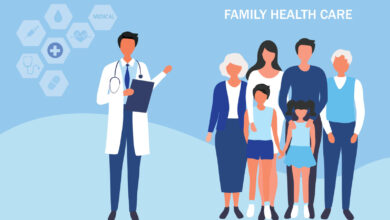WHITE COAT SYNDROME: Is it real?

White Coat Syndrome, or as it’s often called, White Coat Hypertension, is a true phenomenon. It really does exist. I saw it in the office frequently. In this common disorder, the anxiety a patient feels in a medical environment results in abnormally high blood pressure readings. It can happen in the doctor’s office, a clinic, the hospital, and even in just the nearby presence of a medical provider. Normal blood pressure readings taken in the patient’s typical environment suddenly become elevated in the doctor’s office.
The obvious cause of white coat hypertension is anxiety, but other stressors such as work, an emergency situation, intake of caffeine and foods high in sodium, and failure to take prescribed blood pressure medication can also cause temporary elevation of the blood pressure. But true white coat syndrome is an anxiety disorder.
It was first discovered in 1896, but not until 1983 did researchers take it seriously. It was then, using continuous intra-arterial BP monitoring, they discovered that the “appearance of a physician was accompanied by an immediate increase in the patient’s BP and heart rate and they remained elevated during the entire physician visit.” Patient’s with white coat hypertension react negatively “to emotional stimuli that have been associated with painful or unpleasant experiences in the medical office or with a physician.” Patients become “conditioned to have high anxiety at the physicians office,” and white coat hypertension is then classed as a situational anxiety disorder.
The real concern is that white coat hypertension (WCH) has be shown to be a “precursor” to true hypertension, and patients with WCH have a higher frequency of cardiovascular events-
heart attack, stroke, carotid blockage, congestive heart failure. And the risk of vascular death is “nearly twice as high for patients with white coat hypertension.” The other concern is that if the patient has WCH, his or her BP is also going to be elevated during other life stressors. Worry, of whatever kind or origin, overstimulates the body by increasing the production of chemicals (catecholamines) in the body which increase heart rate and tighten the tension in blood vessel walls. High blood pressure results.
Confirmation of the diagnosis is best made by 24-hour ambulatory blood pressure monitoring. In this procedure, patients wear a device which continuously measures their BP wherever they are. Readings are recorded to see if they vary in different environments. The accuracy and reliability of this study is unquestioned, and it is very helpful to the doctor. The worst thing a doctor could do is prescribe a BP lowering drug unnecessarily and have the patient’s BP get too low and cause them to pass out. This can have disastrous consequences.
Since we know WCH exists and is associated with negative outcomes, what can you do to prevent it?
Well, several solutions have been tried, all of which are directed toward lowering the patient’s anxiety level. They are as follow:
Relax: sit and wait before checking BP. Wait up to 20 minutes and recheck BP.
Move: to a quiet, secluded area of the office/clinic. Change office BP measurement protocol.
Deep Breathe, Exhale.
Think Relaxing Thoughts.
Drink a glass of water: before appointment.
Take a 15-20 minute walk: before appointment.
Take a Nap: before appointment.
Avoid Unhealthy Foods (Sodium, Caffeine): before your appointment
Avoid Morning Appointments: BP is higher in the morning.
Drink 20 ounces of beet juice: contains nitrate that dilates blood vessels and lowers BP.
Improve Patient Interaction and Communication: “Training providers to improve communication by listening and including patient’s in the decision-making process has been shown to reduce anxiety and … lessen negative effects of white coat hypertension.”
Dr. G’s Opinion: White coat hypertension is a testy problem. I seemed to have a lot of patients who had it. Maybe that’s a reflection on me, but I certainly hope not. I tried my level best to put patients at ease and lessen their anxiety, but some folks just can’t relax. I tried all these preventive techniques at one time or another, and occasionally had to resort to 24-hour ambulatory monitoring for clarification. That always gave me an answer and enabled me to decide who did and who didn’t need drug treatment. I’m not sure “better communication” is the only solution to WCH. It only works so well. If you can clearly show, through 24-hour BP monitoring, that the patient’s BP is high in the office and normal at home, it is appropriate to have the patient take a short-acting beta-blocker drug (propranolol) an hour or two before their appointment. This lowers the BP enough that it will be normal when checked, but not keep it lowered for a prolonged time. But White Coat Syndrome/Hypertension is a true entity, frustrating though it be!
References:
mayoclinic.org/white coat syndrome
healthline.com/white coat syndrome
respirate.com/white coat hypertension
qardio.Inc.com/white coat hypertension
berkleywellness.com/white coat hypertension
BloodpressureUK.org/white coat hypertension
NCBI.NLM.NIH.gov PsycholResBehavManag. 2015;8:133-141.”Improving Patient Communication”




